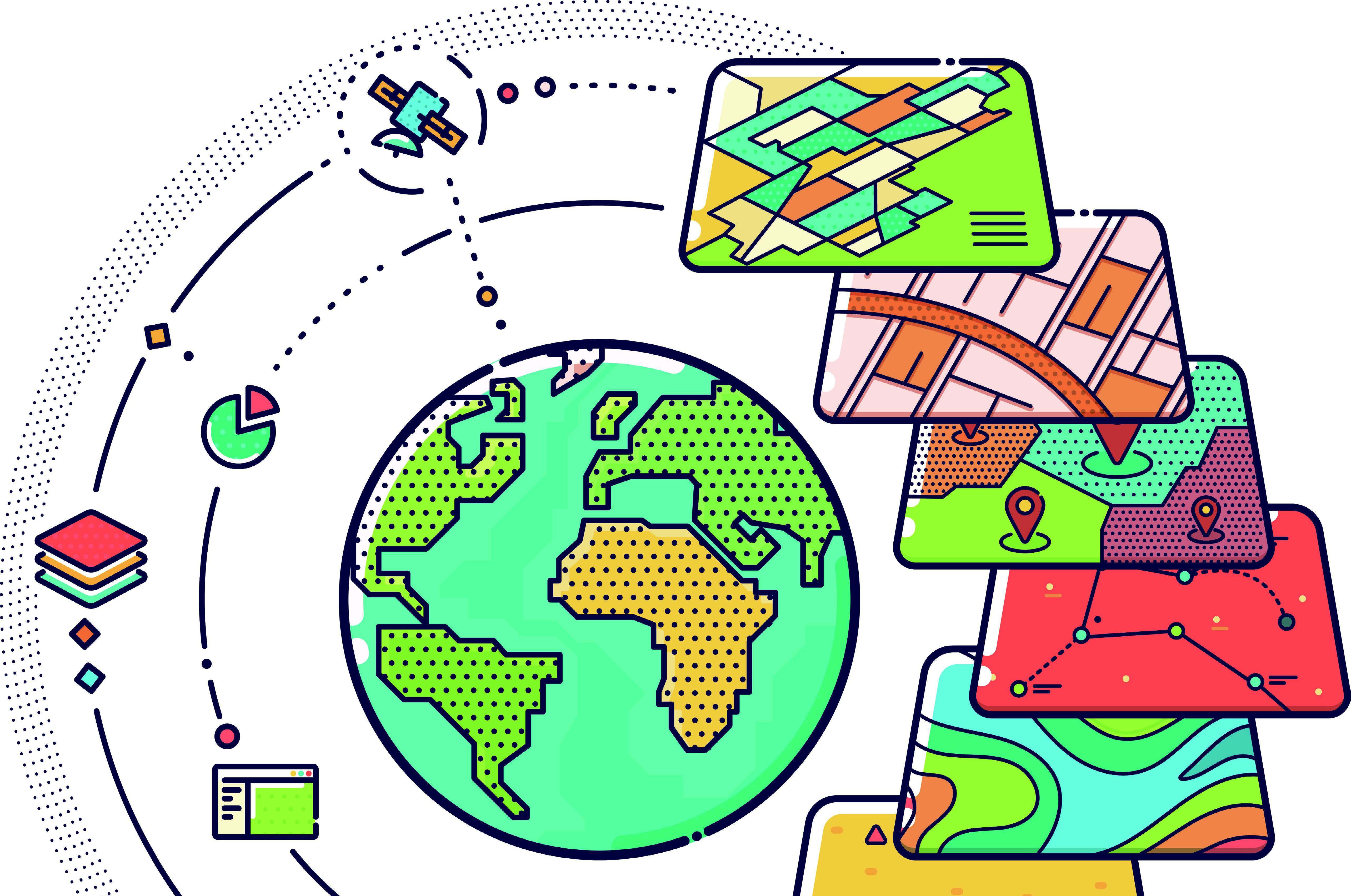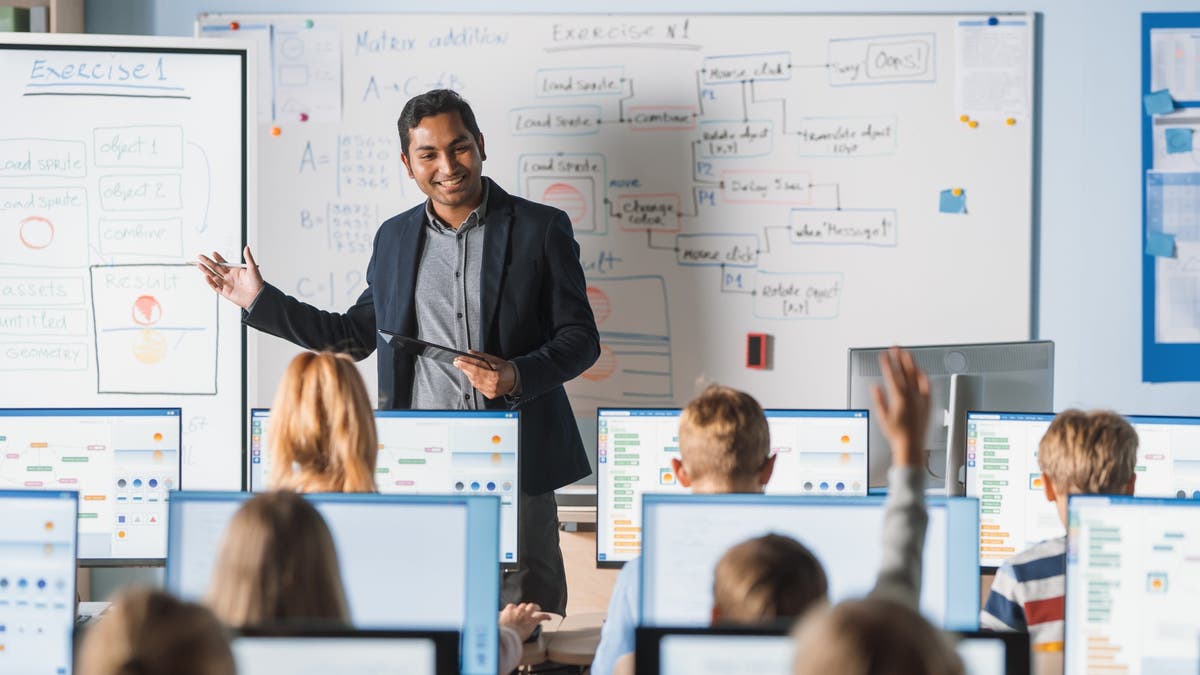My experiences and challenges with online and blended learning
My name is Suruchi Verma, and I’m a certified Indian educator. I am incredibly passionate about discovering the wonders of our globe. I have over 10 years of work experience and my core areas of interest are focused on teaching Geography and work related to spatial planning using Remote Sensing as a tool. It is my goal to combine my range of experience with my ability to be a compassionate educator.
My professional background and primary areas of interest are concentrated in tasks involving spatial planning with the aid of remote sensing. My objective is to combine my breadth of expertise with my capacity as a kind, committed instructor. I think it’s important to create an environment in the classroom where students feel appreciated and free to share their opinions. I want to inspire a sense of wonder and interest in my students about the various cultures, ecosystems, and landscapes that exist on Earth through my teaching. I think education should involve more than just the dissemination of knowledge. It ought to arouse interest and a desire for information. My goal is to provide a stimulating learning atmosphere that inspires children to explore, ask questions, and look for solutions. It is incredibly gratifying to observe their eagerness and the glimmer of interest in their eyes. I have also been nominated for the Best Teacher Award category in the year 2014 under the Ministry of Environment and Forest (Government of India). As an educator with knowledge of developing online and blended learning, I envision leveraging this expertise in several ways in the future. I want to use my understanding of how to design and create engaging digital content that will maximize student engagement and learning results because online learning is becoming more and more common. I can design online learning experiences that capture students’ attention and encourage active involvement by using multimedia components, interactive exercises, and gamification. Technology is continuously changing, and this offers fascinating prospects for improving the educational process. I can investigate and integrate cutting-edge technologies like virtual reality, augmented reality, and artificial intelligence into the educational landscape thanks to my experience creating for online and hybrid learning. I can develop immersive and creative learning experiences that expand comprehension and engage students in new ways by utilizing the possibilities of these technologies.

Technology is a vital part of everyone’s life in the modern world. Technology like computers, laptops, tablets, and smartphones are becoming more and more integral to our daily life. It stands to reason that these useful technologies are also becoming increasingly common in classrooms. The vast majority of educational institutions, including schools, colleges, universities, and other training centers, are already considering how to include new technologies in their curricula. I believe that when establishing teaching and learning tactics, consideration is constantly given to the expectations, learning styles, and interests of students. Technology has mostly been the driving force behind the most recent modifications to the traditional classroom. Due of this, blended learning was developed, allowing students and teachers to connect in a variety of ways. I started learning online in 2019 as a result of COVID-19 school closings. In my school, many teachers were getting used to using computers, learning how to best transfer the benefits of face-to-face training to the online environment, and figuring out how to employ technology-supported instruction to enhance student learning. This instructional approach was used in my classroom. I had to make the most of hybrid learning in a totally virtual setting when I shifted to remote study in 2019. I had previously researched the flipped-classroom model, which is a well-liked approach to blended learning that frequently blends autonomous home viewing of instructional videos with class time spent finishing work. I worked to replicate the benefits of “traditional” in-person learning as I made the switch to remote learning by using live, virtual small-group classes that allowed students the chance to ask clarifying questions in real-time and to provide peer-to-peer learning opportunities as well as crucial social interactions.
To ensure a successful learning experience, it’s critical to address the specific problems that online and blended learning might provide. I made a conscious effort to incorporate as many pertinent videos and tech-savvy strategies as I could into my assignments. I frequently found it helpful to intersperse a few shorter films with questions to strengthen my case. When I initially began teaching online, I embraced Google Classroom wholeheartedly. I was a little hesitant and struggled a little. I initially struggled to understand how to upload materials and create lesson plans. Arya, one of my coworkers at the time, assisted me create a lesson plan and look for other ways to train pupils. The learning process might be interfered with by technical problems like poor internet connectivity, software bugs, or incompatibility with certain devices. Having a dependable internet connection and making sure that hardware and software are up to date are essential. Technical support and troubleshooting manuals are also excellent tools for quickly resolving technical issues. Some people’s preferred learning styles may not be accommodated by online or hybrid learning methods. For instance, visual learners may find it difficult to understand text-heavy internet content. In these circumstances, utilizing multimedia tools, asking instructors for alternate forms, or locating additional supplemental materials can all improve the learning process. It might also be helpful to be aware of your own learning preferences and modify your study methods accordingly. Setting up distinct boundaries between study time and other commitments is crucial. Create a productive learning environment by setting priorities, using time management strategies, and sharing your schedule with others.
I frequently showed an introductory video to students before explaining the concept in class to pique their attention. Combining conventional instruction with technological advancements, in my opinion, is the finest method to enhance learning. In my opinion, cutting-edge teaching methods must be integrated with new technology and collaboration tools to produce dynamic, inclusive, and personalized hybrid learning experiences. Through the use of digital tools, teachers are supported and given the chance to develop their teaching methods. For instance, incorporating game-based activities into the learning process may boost motivation and engagement among pupils, especially in the case of younger ones. In addition to helping teachers assess student performance in the classroom and make decisions that will improve learning outcomes, learning analytics systems can also help teachers monitor student progress. However, a lack of digital literacy among teachers continues to be one of the major barriers to blended learning. understand how to use technologies as the curriculum shift efficiently.
I believe that increasing teacher empowerment and professional development funding is crucial for enhancing teachers’ abilities and properly using blended learning. My expertise in building for online and blended learning gives me the tools I need to construct efficient mixed learning environments, incorporate emerging technologies, assist other educators, and advance the field of education. By utilizing these abilities, I hope to improve the educational process and get pupils ready for the digital era.
your introductory blog post provides a good overview of your background, experience, and passion as an educator. It effectively highlights your expertise in teaching Geography and spatial planning using Remote Sensing, as well as your commitment to creating an engaging and stimulating learning environment.
Thanks Navneet for your valuable comments.
Dear Surchi, Your accomplishments as a teacher and your profile encouraged and inspired me. Your level of competence is excellent, and I recommend that you continue your outstanding work. Wonderful inspiration!
Thanks, Margarita for your Valuable comments.
Great Work Suruchi! I am inspired!
Thanks Margarita 🙂
Suruchi,
Thank you for sharing your insights & thoughts. I really enjoyed reading through your blog post & gaining a deeper understanding of who you are & what you aspire to be. To have been nominated for the Best Teacher Award in 2014 is such an accomplishment in its own- good for you! I find your drive for designing & creating engaging digital content inspiring and I strive to feel the same way about it. Like you said it is becoming more & more common and can be a great way to improve & maximize student engagement & learning results. I look forward to hearing more from you this term & seeing all that you create.
– Kennedy
Thanks a lot Kennedy Loreth for your I sincerely appreciate for the amazing comments. I am very grateful for your nice words and considerate action.
Wow, superb weblog layout! How lengthy have you been blogging for?
you make running a blog look easy. The full glance of your website
is great, let alone the content! You can see similar: najlepszy sklep and here sklep online